Author: Bill Ward
In the recent newsletter of the Boerne Chapter of the Native Plant Society of Texas, Jack Morgan wrote a good piece on how lucky we are to live in bigtooth maple country. He is so right! This fall especially, the bigtooth maples are living up to their reputation. The “best-in-years” foliage color seems to be a response to the severe drought, not only in maples, but also in many other native trees and bushes.
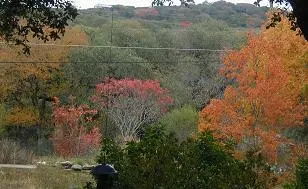
Yes, it’s a colorful fall out there. Well, perhaps not so much in my neighborhood. Many yards are pretty dull this time of year, mostly old-live-oak green and frost-bitten-grass brown. Here and there a few Texas red oaks, post oaks, and cedar elms provide some spots of color, but it’s mostly green and brown around here.
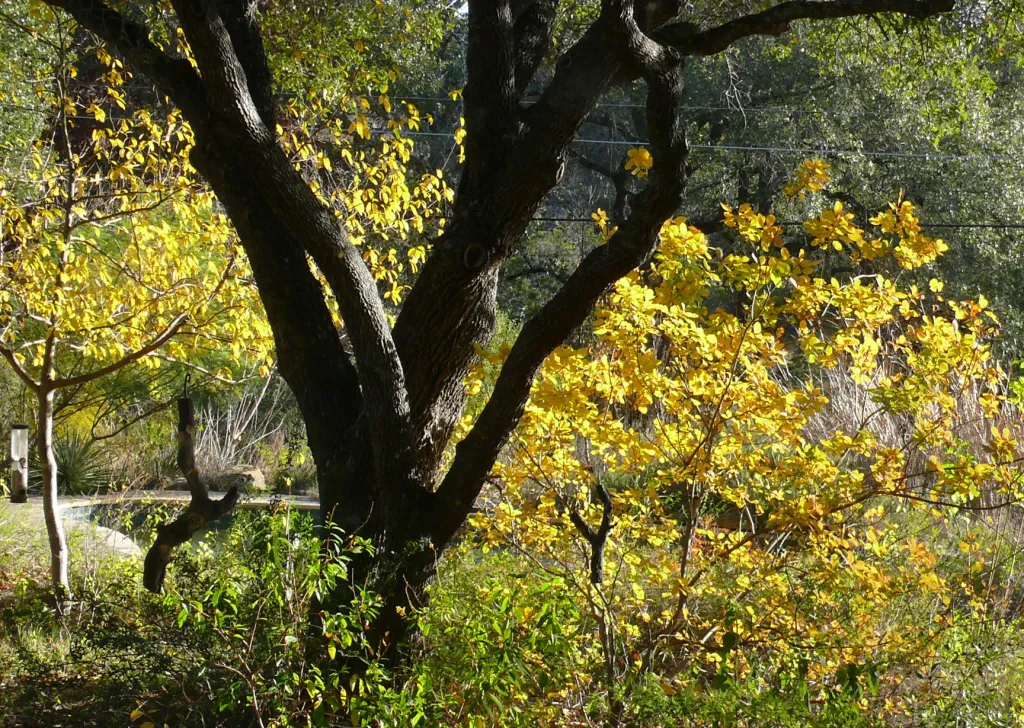
There are exceptions, of course, and I’m happy to say our yard is one of them. It’s not just our bigtooth maples, cedar elms, and red oaks that are giving good color. Several of our smaller native trees and bushes also have brightened up the yard for the last few weeks.
A more typical yard in this area is park-like, mostly live oaks and grass. The native bushes and small trees that used to grow under those oaks are long gone. It is these understory plants that distinguish our yard from most others in our neighborhood, and this is never more apparent than in the fall. Our autumn color is not just in the tree tops. It’s in the understory, too.
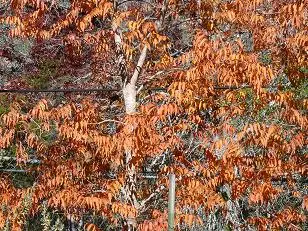
In the slanted sunlight of fall mornings, the view from our breakfast-room window makes us want to linger over a second cup of coffee. Lots of autumn color. Red, orange, and gold of the flame-leaf sumac, soapberry, bigtooth maple, Texas red oak, buttonbush, and pigeon berry. Bright yellow of the smoketree, Carolina buckthorn, black cherry, witch hazel, and cedar elm.
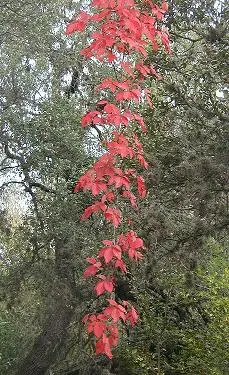
In the front yard, we enjoy the bright yellow of the spicebush, Mexican buckeye, and Carolina buckthorn, as well as the red and gold of the bigtooth maples. The red leaves of the Virginia creeper vines add some spots of color among the live oak branches.
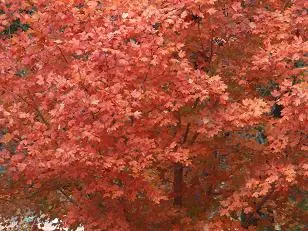
For the past six and a half years, our Boerne Chapter’s Operation NICE! (Natives Instead of Common Exotics!) has promoted using native understory trees and bushes as landscape plants. These plants not only save water, they are important in sustaining birds and other wildlife. Another virtue of many native understory plants is that they produce pretty fall foliage. The NICEst yards are the most colorful this time of year.
